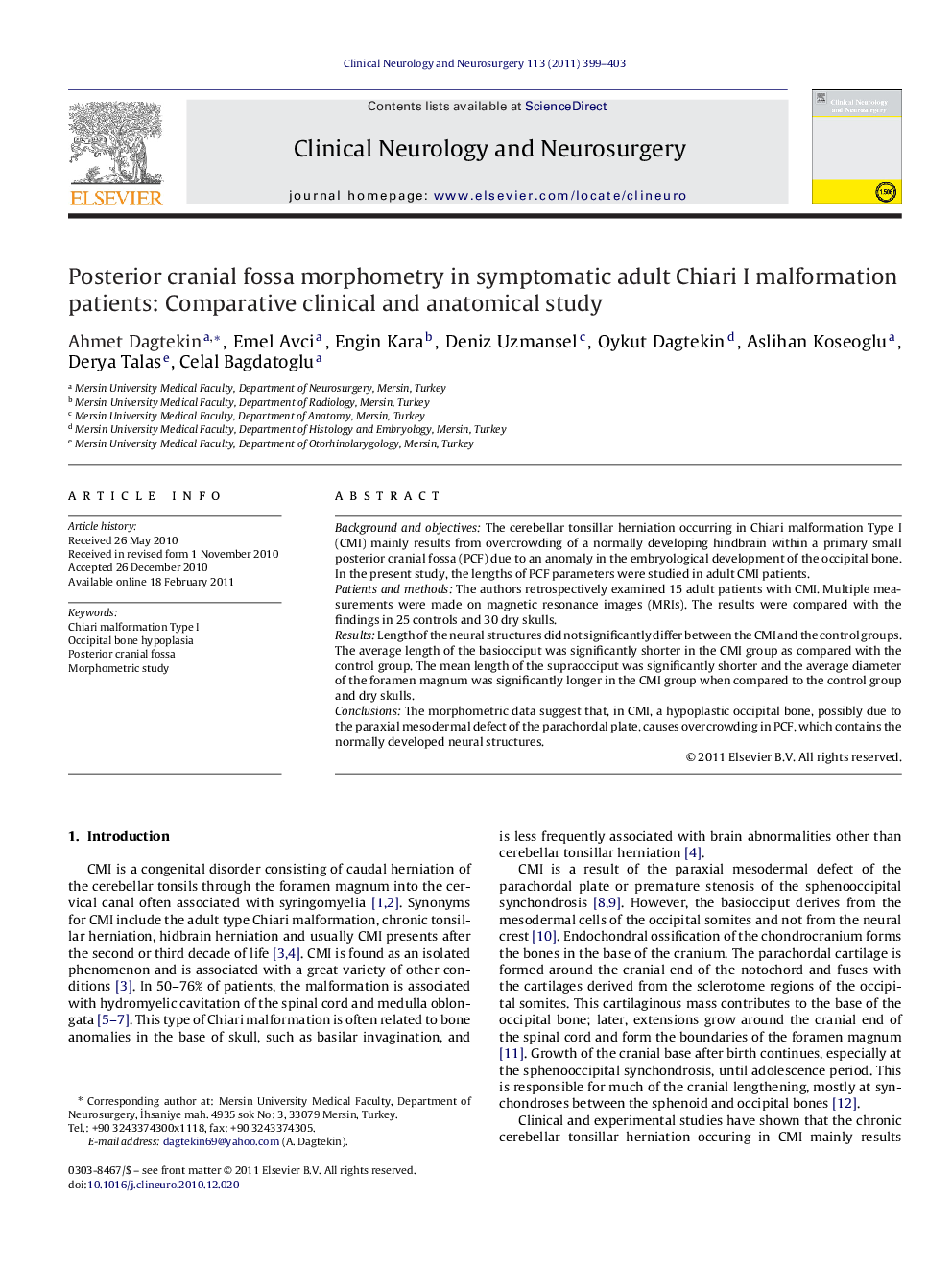| Article ID | Journal | Published Year | Pages | File Type |
|---|---|---|---|---|
| 3041465 | Clinical Neurology and Neurosurgery | 2011 | 5 Pages |
Background and objectivesThe cerebellar tonsillar herniation occurring in Chiari malformation Type I (CMI) mainly results from overcrowding of a normally developing hindbrain within a primary small posterior cranial fossa (PCF) due to an anomaly in the embryological development of the occipital bone. In the present study, the lengths of PCF parameters were studied in adult CMI patients.Patients and methodsThe authors retrospectively examined 15 adult patients with CMI. Multiple measurements were made on magnetic resonance images (MRIs). The results were compared with the findings in 25 controls and 30 dry skulls.ResultsLength of the neural structures did not significantly differ between the CMI and the control groups. The average length of the basiocciput was significantly shorter in the CMI group as compared with the control group. The mean length of the supraocciput was significantly shorter and the average diameter of the foramen magnum was significantly longer in the CMI group when compared to the control group and dry skulls.ConclusionsThe morphometric data suggest that, in CMI, a hypoplastic occipital bone, possibly due to the paraxial mesodermal defect of the parachordal plate, causes overcrowding in PCF, which contains the normally developed neural structures.
